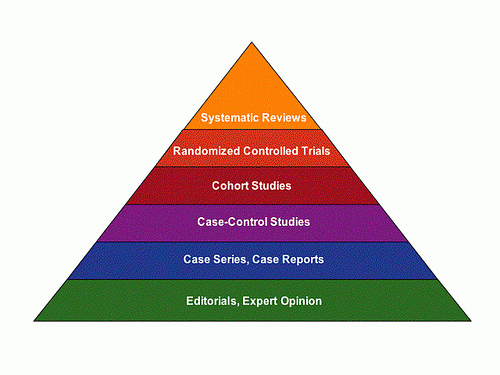Learning Objectives

(image courtesy of uncg.libguides.com)
Evidence-based practice (EBP) is a term that is often confused in its understanding and application. For certain, best practices in physical therapy include techniques and interventions supported in the scientific literature. However, EBP, includes the integration of patient/client experience and goals and the experience of the health care provider. This triad: the research, the practitioner, and the patient, are the core elements of evidence-based practice.
In PTA 100, we discussed EBP in regards to the PT Guide to Practice. In this lesson, we will introduce the use of EBP in clinical practice and explore opportunities and methodology in formulating answerable clinical questions.
Lesson Objectives
By the end of this lesson, the student should be able to:
- Define evidence-based practice as it is used in physical therapy
- Compare and contrast arguments for and against evidence-based practice
- Identify and describe the steps included in supporting evidence-based practice
- Access library and APTA resources relevant to a clinical question or topic
- Classify question type as foreground or background in a given case example
- Define and describe types of studies in evidence-based practice
- Define and describe rating systems for evidence-based practice
- Examine the impacts of evidence-based treatment on patient preferences and clinical experience
- Discuss how evidence-based practice is incorporated into the course materials and texts
- Describe strategies to apply evidence-based practice to clinical cases

